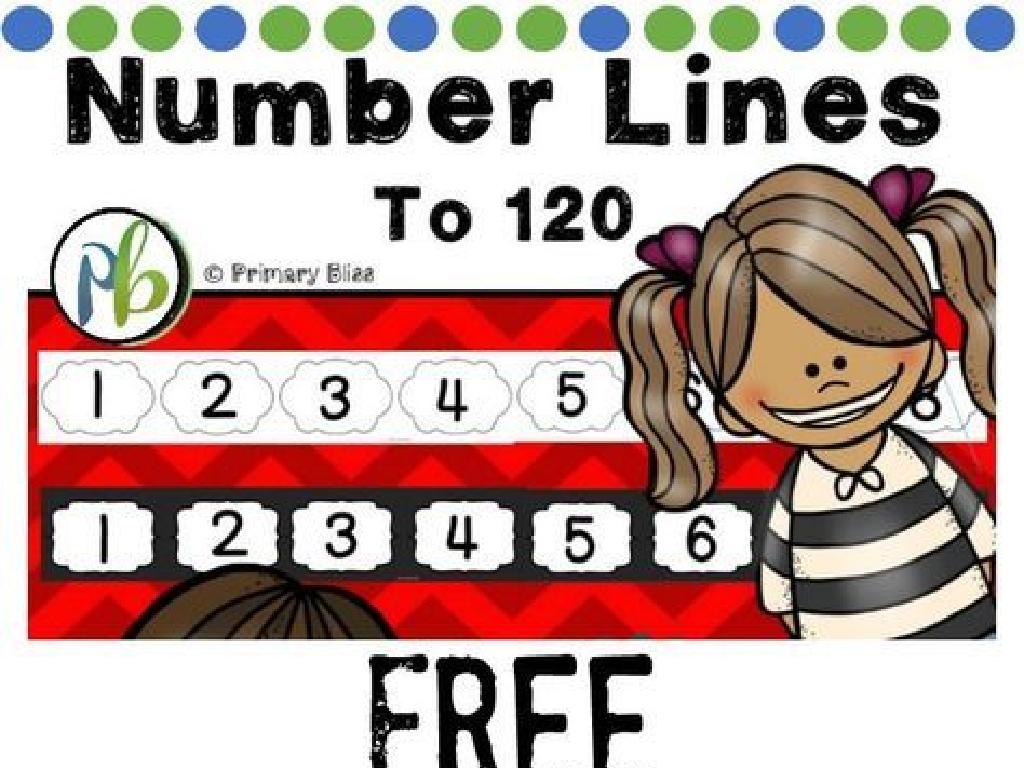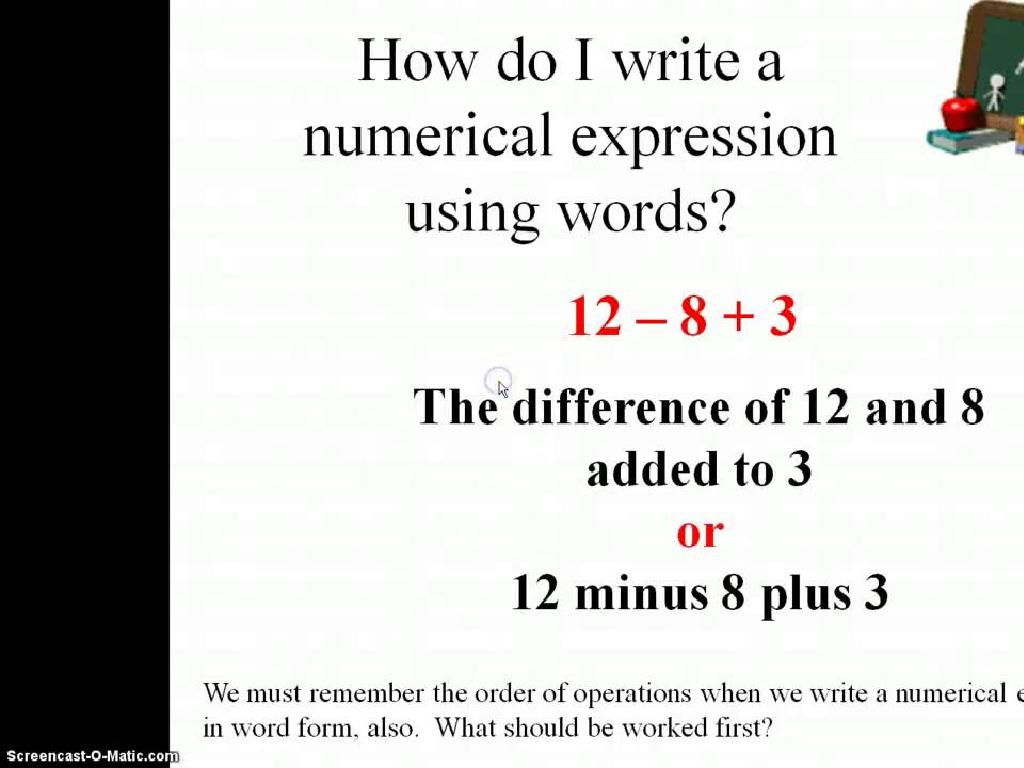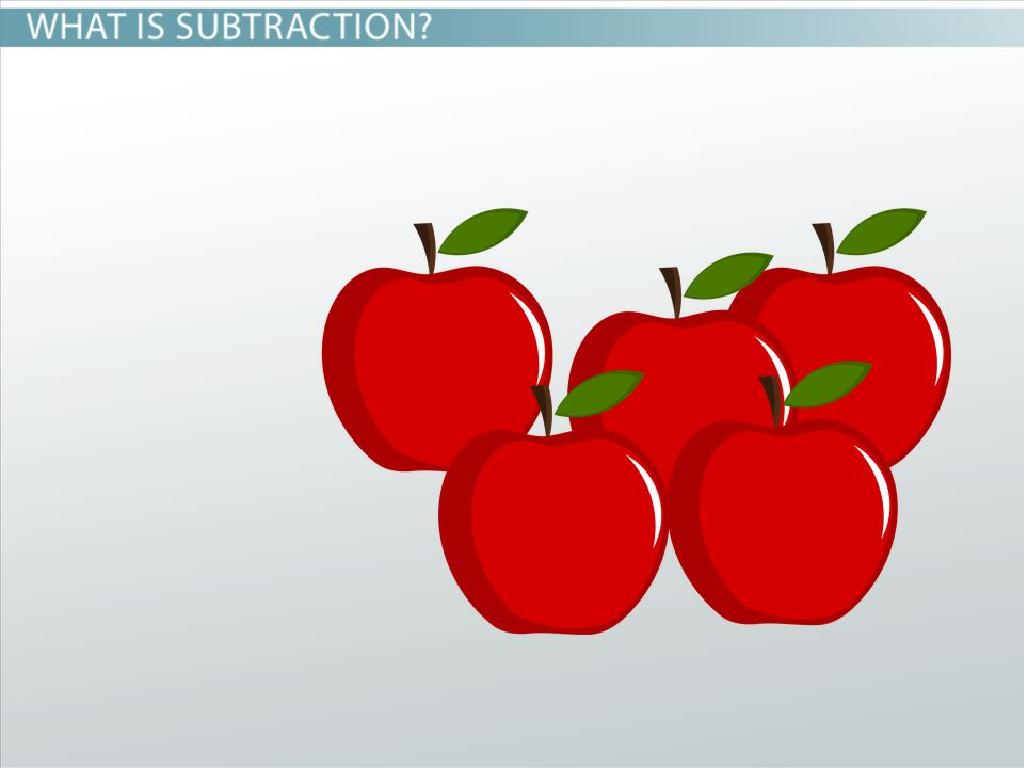Understanding Decimals Expressed In Words
Subject: Math
Grade: Fifth grade
Topic: Decimal Place Value
Please LOG IN to download the presentation. Access is available to registered users only.
View More Content
Understanding Decimals Expressed in Words
– Decimals represent parts of a whole
– Like fractions, decimals show amounts less than one, e.g., 0.5 is ‘half’
– Reading decimals in word form
– ‘Point five’ means 0.5, ‘point seventy-five’ means 0.75
– Decimal place value’s role in daily life
– Knowing decimal place value helps with money, measurements, and more
– Practice with real-world examples
– Use price tags, recipes, or measurements for hands-on learning
|
This slide introduces the concept of decimals and their verbal expression, which is crucial for understanding mathematical notation and its practical applications. Emphasize that decimals are another way to represent fractions and are used in various aspects of everyday life, such as dealing with money or measuring ingredients. Encourage students to practice by reading decimals out loud and connecting them to real-world examples. Provide exercises where students can apply their knowledge of decimal place value to situations they might encounter outside of school, like shopping or cooking, to reinforce the importance of understanding decimals.
Understanding Decimals
– Definition of a decimal
– A decimal is a number with a whole part and a fractional part, separated by a decimal point.
– Purpose of the decimal point
– The decimal point separates the whole number from the fractional part.
– Comparing whole numbers and decimals
– Whole numbers have no decimal or fractional part; decimals can represent parts of a whole.
– Decimal fractions explained
– Decimal fractions are parts of a whole, written with a decimal point, not as a fraction.
|
This slide introduces the concept of decimals to fifth-grade students. Begin by defining a decimal as a number that includes a whole number part and a fractional part, separated by a decimal point. Explain the role of the decimal point in distinguishing between the whole number and the fractional part. Compare and contrast whole numbers, which have no fractional component, with decimal numbers that can represent fractions without needing a numerator and denominator. Emphasize that decimal fractions are another way to write fractions, making it easier to perform calculations. Use visual aids to show the placement of the decimal point and provide examples of both whole numbers and decimal fractions for clarity.
Reading Decimals Aloud
– Learn to read decimals aloud
– Pronounce the whole number part, then ‘and’, followed by the decimal part
– See examples of decimals in words
– 0.5 as ‘zero and five tenths’, 3.09 as ‘three and nine hundredths’
– Practice reading decimals together
– Take turns reading decimals in class; correct pronunciation is key
|
This slide is aimed at teaching fifth graders how to properly read decimals aloud, emphasizing the correct pronunciation of the whole number followed by the decimal part. Start by explaining the process, then show examples on the board, and finally, have the students practice by reading out loud in class. Encourage them to articulate the ‘and’ between the whole number and the decimal part, and to name the decimal place value correctly. For example, ‘zero and five tenths’ instead of just ‘point five’. This exercise will help students become comfortable with decimals and improve their verbal math skills.
Decimal Place Value: Understanding Decimals
– Decimals represent parts of a whole
– Place values: tenths, hundredths, thousandths
– Tenths: 0.1, Hundredths: 0.01, Thousandths: 0.001
– Comparing decimal place values
– Compare by looking at the highest place value
– Determining which decimal is bigger
– Use place value to decide: 0.5 is bigger than 0.05
|
This slide introduces students to the concept of decimals and their place values, which is a fundamental aspect of understanding how to work with decimals. Start by explaining that decimals are a way to express fractions and parts of a whole number. Emphasize the importance of place value by showing how each position to the right of the decimal point represents tenths, hundredths, and thousandths. Teach students how to compare decimals by looking at the highest place value first and understanding that a digit in the tenths place is worth more than the same digit in the hundredths or thousandths place. Provide examples and practice problems to help students grasp the concept of comparing decimals and determining which is larger.
Writing Decimals in Words
– Rules for writing decimals
– Say the whole number part, then ‘and’, then the decimal part as individual digits.
– Writing decimal examples
– For example, 3.14 is ‘three and fourteen hundredths’.
– Class practice on whiteboards
– Each student writes decimals in words on their whiteboard.
– Share and review answers
– Discuss as a class and correct any mistakes.
|
Begin with explaining the rules for writing decimals in words, emphasizing the use of ‘and’ to separate the whole number from the decimal part. Provide clear examples, showing how each digit after the decimal point is read individually. For the class practice, have students use whiteboards to write decimals in words, which allows for quick sharing and correcting. This interactive activity helps reinforce their understanding and gives them immediate feedback. After the practice, encourage students to share their answers with the class, fostering a collaborative learning environment where they can learn from each other’s mistakes and successes.
Decimals in Everyday Life
– Decimals in daily scenarios
– Think about shopping, cooking, and sports stats
– Decimals in money and measurements
– Cents in dollars, liters in beverages, meters in cloth
– Examples of decimals around us
– $4.59 for a sandwich, 1.5 liters of soda, 0.75m of fabric
|
This slide aims to help students recognize the presence and importance of decimals in everyday life. Begin by discussing common situations where decimals are used, such as in shopping when dealing with money, in cooking with measurements, or in sports when looking at statistics. Provide concrete examples such as the price of a sandwich, the volume of a soda bottle, or the length of fabric needed for a craft. These real-life connections will make the concept of decimals more relatable and easier to grasp. Encourage students to share their own examples of where they have seen or used decimals. This will help solidify their understanding and demonstrate the practical application of decimals in their daily lives.
Class Activity: Decimals Scavenger Hunt
– Find decimal numbers around you
– Write decimals in words
– For example, 0.5 becomes ‘five tenths’
– Share findings with the class
– Understand decimal place values
– This helps grasp the concept of decimals in everyday life
|
This interactive activity is designed to help students recognize and understand decimals in their environment. Encourage students to look for decimals in contexts such as price tags, measurements, and nutrition labels. They should write down the decimal and then express it in words, reinforcing their understanding of decimal place value. After the scavenger hunt, students will share their findings with the class, which will provide a variety of examples and foster a collaborative learning experience. As a teacher, be prepared to guide them through expressing the decimals in words and ensure they grasp the concept of tenths, hundredths, etc. Offer assistance with more complex numbers and praise their efforts to build confidence.
Decimals in Words: Conclusion and Review
– Recap: Decimals and Place Value
We revisited how to express decimals in words and their place values.
– Importance of Decimal Knowledge
Decimals are everywhere! In money, measurements, and statistics.
– Engage in Q&A Session
Let’s answer any questions and clear up confusion.
– Reflect on Today’s Learning
Think about how you can use decimals in daily life.
|
This slide aims to consolidate the students’ understanding of decimals and their place value. Begin with a brief recap of the lesson, highlighting the key points about expressing decimals in words and understanding each digit’s place value. Emphasize the practical importance of decimals in everyday life, such as in dealing with money or measurements. Open the floor for a Q&A session to address any uncertainties the students may have, ensuring they feel confident in what they’ve learned. Conclude by asking students to reflect on how they can apply this knowledge outside of the classroom, reinforcing the real-world application of decimals.
Homework: Mastering Decimals in Words
– Complete the decimals worksheet
– Find decimals around your home
– Look on receipts, labels, or measuring tools
– Write decimals as words
– For example, $2.35 is ‘two dollars and thirty-five cents’
– Study for the upcoming quiz
|
This homework assignment is designed to reinforce the day’s lesson on understanding decimals expressed in words. The worksheet provides structured practice, while searching for decimals at home encourages real-world application of the concept. Writing decimals as words will help solidify their understanding of place value and the relationship between numbers and their written counterparts. Remind students to review their notes and completed worksheets to prepare for the quiz on decimals during the next class. Offer some example quiz questions to guide their study.






